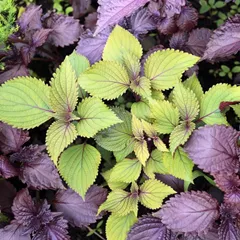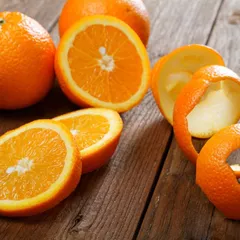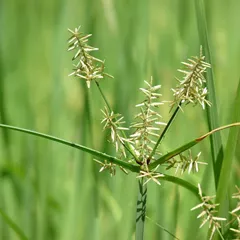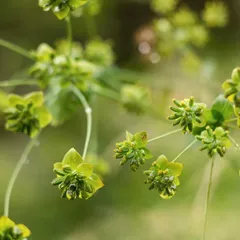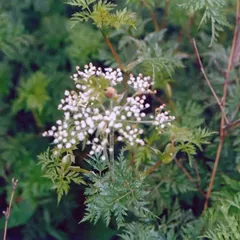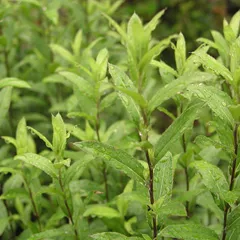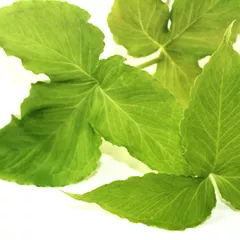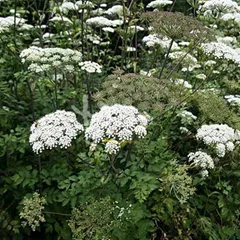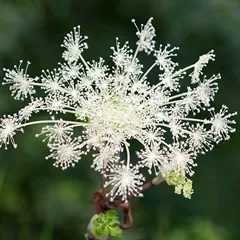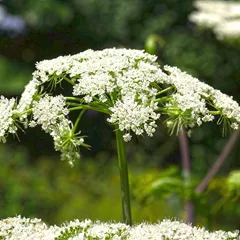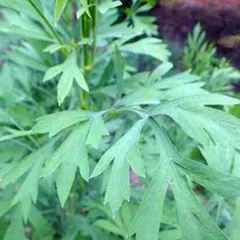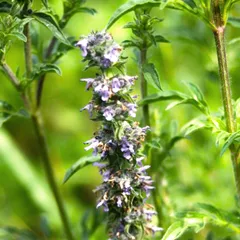Jia Wei Xiang Su San
Jia Wei Xiang Su San
Chinese: 加味香苏散
Pinyin: Jiā Wèi Xiāng Sū Sàn
Other names: Augmented Cyperus and Perilla Leaf Powder
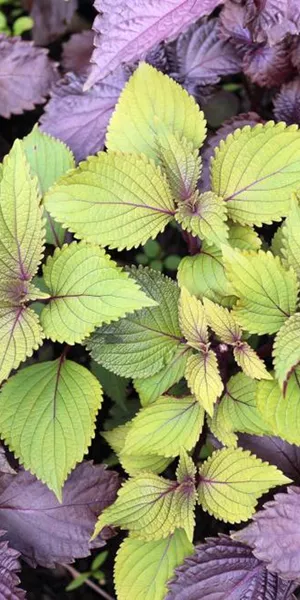
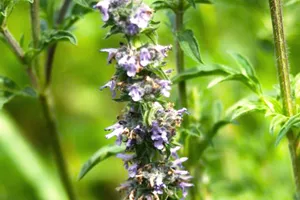
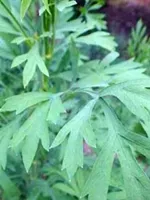
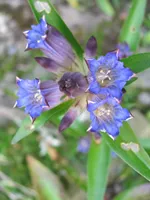




Jia Wei Xiang Su San
Jia Wei Xiang Su San
Chinese: 加味香苏散
Pinyin: Jiā Wèi Xiāng Sū Sàn
Other names: Augmented Cyperus and Perilla Leaf Powder
Number of ingredients: 10 herbs
Formula category: Formulas that clear Wind-Cold
Mother formula: Xing Su San
Conditions for which it may be prescribed: InfluenzaCommon coldGlobus pharyngis and two other conditions
- Promote sweating
- Releases the Exterior
Source date: 1732 AD
Source book: Wakening of the Mind in Medical Studies
The information provided here is not a replacement for a doctor. You shouldn't use it for the purpose of self-diagnosing or self-medicating but rather so you can have a more informed discussion with a professional TCM practitioner.
Jia Wei Xiang Su San is a 10-ingredient Chinese Medicine formula with Perilla Leaves (Zi Su Ye) and Japanese Catnip (Jing Jie) as principal ingredients.
Invented in 1732 AD, it belongs to the category of formulas that clear Wind-Cold. Its main actions are: 1) promote sweating and 2) releases the Exterior .
In Chinese Medicine health conditions are thought to arise due to "disharmonies" in the body as a system. These disharmonies are called "patterns" and the very purpose of herbal formulas is to fight them in order to restore the body's harmony.
In this case Jia Wei Xiang Su San is used by TCM practitioners to fight patterns like Wind-Cold. From a Western Medicine standpoint, such patterns can give rise to a range of conditions such as common cold, influenza or upper respiratory tract infections for instance.
On this page, after a detailed description of each of the ten ingredients in Jia Wei Xiang Su San, we review the patterns and conditions that Jia Wei Xiang Su San helps treat.
The ten ingredients in Jia Wei Xiang Su San
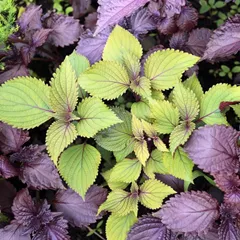
Zi Su Ye is a king ingredient in Jia Wei Xiang Su San. Like the name indicates, it means it has more power than other ingredients in the formula.
1. Perilla Leaves (Zi Su Ye)
In general Zi Su Ye's main actions are as follows: "Relieves the Exterior and disperses Cold. Promotes the circulation of Spleen and Stomach Qi. Calms a restless fetus. Detoxifies seafood poisoning"
In the context of Jia Wei Xiang Su San, it is used because it promotes the Qi circulation in the Exterior, opens up the skin pores, and dispel Wind-Cold.
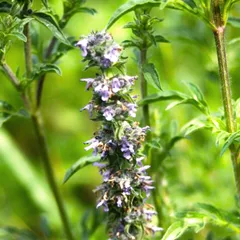
Jing Jie is a king ingredient in Jia Wei Xiang Su San. Like the name indicates, it means it has more power than other ingredients in the formula.
2. Japanese Catnip (Jing Jie)
Part used: Aerial portion and flowers, or the spikes only (in which case it is called Jing Jie Sui)
Nature: Neutral
Taste(s): Pungent
In general Jing Jie's main actions are as follows: "Relieves the Exterior and disperses Cold or Heat depending on the other herbs used. Releases the Exterior for measles. Stops bleeding. Abates swellings."
In the context of Jia Wei Xiang Su San, it is used because it promotes the Qi circulation in the Exterior, opens up the skin pores, and dispel Wind-Cold.
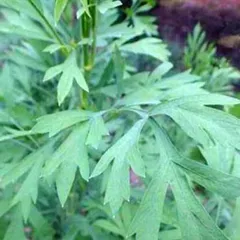
Fang Feng is a deputy ingredient in Jia Wei Xiang Su San. This means it helps the king ingredient(s) treat the main pattern or it serves to treat a coexisting pattern.
3. Saposhnikovia Roots (Fang Feng)
In general Fang Feng's main actions are as follows: "Relieves the Exterior and disperses Cold. Relieves Wind-Damp-Cold painful obstruction. Disperses Wind."
In the context of Jia Wei Xiang Su San, it is used because it dispels Wind-Cold and relieves pain from the muscles and channels.
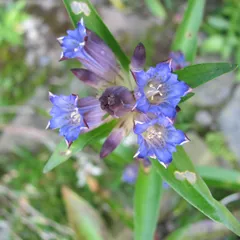
Qin Jiao is a deputy ingredient in Jia Wei Xiang Su San. This means it helps the king ingredient(s) treat the main pattern or it serves to treat a coexisting pattern.
4. Gentian Roots (Qin Jiao)
Part used: Dried root
Nature: Cool
Meridian affinity: GallbladderStomachLiver
Category: Herbs that dispel Wind and Dampness
In general Qin Jiao's main actions are as follows: "Clears either acute or chronic, Cold or Hot Wind-Damp conditions. Clears Heat from Yin Deficiency. Lubricates the Intestines and promotes bowel movements."
In the context of Jia Wei Xiang Su San, it is used because it dispels Wind-Cold and relieves pain from the muscles and channels.
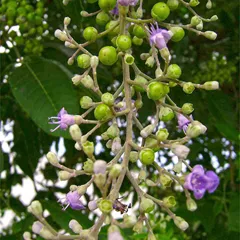
Man Jing Zi is a deputy ingredient in Jia Wei Xiang Su San. This means it helps the king ingredient(s) treat the main pattern or it serves to treat a coexisting pattern.
5. Vitex Fruits (Man Jing Zi)
In general Man Jing Zi's main actions are as follows: "Relieves the Exterior, scatters Wind and clears Heat. Clears Wind-Heat associated with the Liver. Clears Wind-Damp painful obstruction."
In the context of Jia Wei Xiang Su San, it is used because it relieves headache.
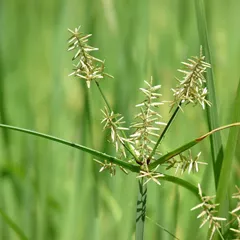
Xiang Fu is an assistant ingredient in Jia Wei Xiang Su San. This means that it either serves to reinforces the effect of other ingredients or it moderates their toxicity.
6. Coco-Grass Rhizomes (Xiang Fu)
Part used: Dried rhizome
Nature: Neutral
Meridian affinity: LiverSanjiaoSpleen
Category: Herbs that regulate Qi
Xiang Fu promotes Qi and Blood circulation in the Interior and enables the the General Qi to ascend and spread throughout the Exterior. It is particularly good at releasing constraint and removing Stagnation from all twelve Channels.
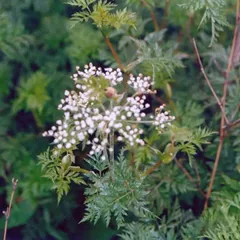
Chuan Xiong is an assistant ingredient in Jia Wei Xiang Su San. This means that it either serves to reinforces the effect of other ingredients or it moderates their toxicity.
7. Szechuan Lovage Roots (Chuan Xiong)
Part used: Dried rhizome
Nature: Warm
Taste(s): Pungent
Meridian affinity: GallbladderLiverPericardium
Category: Herbs that invigorate the Blood
Chuan Xiong treats of headache. It focuses on the Liver especially, which governs ascension and dispersal. If there is no Qi and Blood Stagnation in the Interior, Pernicious Influences are more easily dispersed from the Exterior.
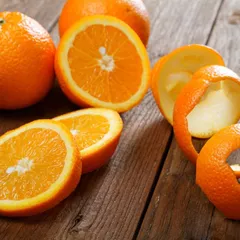
Chen Pi is an assistant ingredient in Jia Wei Xiang Su San. This means that it either serves to reinforces the effect of other ingredients or it moderates their toxicity.
8. Tangerine Peel (Chen Pi)
In general Chen Pi's main actions are as follows: "Warms the Spleen and regulates the Middle Burner Qi. Dries Dampness and disperses Phlegm from the Lungs and Middle Burner. Reduces the potential for Stagnation caused by tonifying herbs."
In the context of Jia Wei Xiang Su San, it is used because it regulates and ascends Qi. It also dries Dampness.

Sheng Jiang is an assistant ingredient in Jia Wei Xiang Su San. This means that it either serves to reinforces the effect of other ingredients or it moderates their toxicity.
9. Fresh Ginger (Sheng Jiang)
In general Sheng Jiang's main actions are as follows: "Relieves the Exterior and disperses Cold. Warms and circulates Qi in the Middle Burner. Calms a restless fetus and treats morning sickness. Treats seafood poisoning."
In the context of Jia Wei Xiang Su San, it is used because it is acrid. It assists the Lungs in better controlling of the pores and interstices.
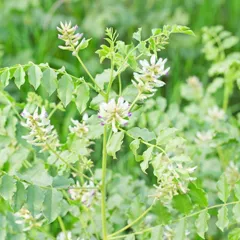
Gan Cao is an envoy ingredient in Jia Wei Xiang Su San. This means that it directs the formula towards certain area of the body and/or harmonizes the actions of other ingredients.
10. Liquorice (Gan Cao)
Part used: Dried root and rhizome
Nature: Neutral
Taste(s): Sweet
Meridian affinity: HeartLungSpleenStomach
Category: Tonic herbs for Qi Deficiency
Gan Cao harmonizes the actions of the other herbs. It also strengthens the
Stomach and prevents the Qi regulating herbs from consuming
the Qi.
Jia Wei Xiang Su San is used to treat Wind-Cold
It's important to remember that herbal formulas are meant to treat patterns, not "diseases" as understood in Western Medicine. According to Chinese Medicine patterns, which are disruptions to the body as a system, are the underlying root cause for diseases and conditions.
As such Jia Wei Xiang Su San is mostly used to treat the pattern "Wind-Cold" which we describe below.
But before we delve into Wind-Cold here is an overview of the Western conditions it is commonly associated with:
Common cold Influenza Upper respiratory tract infections Acute gastroenteritis Globus pharyngis
Again it wouldn't be correct to say "Jia Wei Xiang Su San treats common cold" for instance. Rather, Jia Wei Xiang Su San is used to treat Wind-Cold, which is sometimes the root cause behind common cold.
Now let's look at Wind-Cold, a pattern that TCM practitioners commonly treat with Jia Wei Xiang Su San.
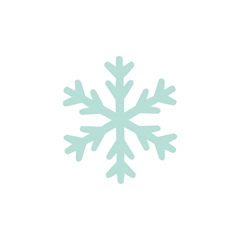
'Cold' as a body pattern in Chinese Medicine is one of the so-called "Eight Principles". Learn more about Cold pattern in Chinese Medicine
Wind-Cold
Pulse type(s): Tight (Jin), Floating (Fu)
Symptoms: Fever Chills Sneezing Coughing No sweat Headaches No thirst Runny nose Body aches Sore throat Blocked nose Itchy throat Aversion to cold White watery mucus Occipital headaches Occipital stiffness
Jia Wei Xiang Su San is sometimes prescribed by TCM practitioners to treat Wind-Cold. This pattern leads to symptoms such as aversion to cold, fever, sneezing and coughing. Patients with Wind-Cold typically exhibit tight (Jin) or floating (Fu) pulses.
This pattern is similar to Wind-Heat, but the Wind is combined with Cold rather than Heat. The shared symptoms are aversion to cold, sneezing, coughing, runny nose (with different mucus color), fever, occipital stiffness and ache. The different symptoms are the white watery mucus, no thirst, no... read more about Wind-Cold
Formulas similar to Jia Wei Xiang Su San
Shi Shen Tang is 55% similar to Jia Wei Xiang Su San
Chai Hu Shu Gan San is 40% similar to Jia Wei Xiang Su San
Cang Fu Dao Tan Wan is 40% similar to Jia Wei Xiang Su San
Xiong Gui Er Chen Tang is 40% similar to Jia Wei Xiang Su San
Qiang Huo Sheng Shi Tang is 40% similar to Jia Wei Xiang Su San
Shi Wei Bai Du San is 40% similar to Jia Wei Xiang Su San

